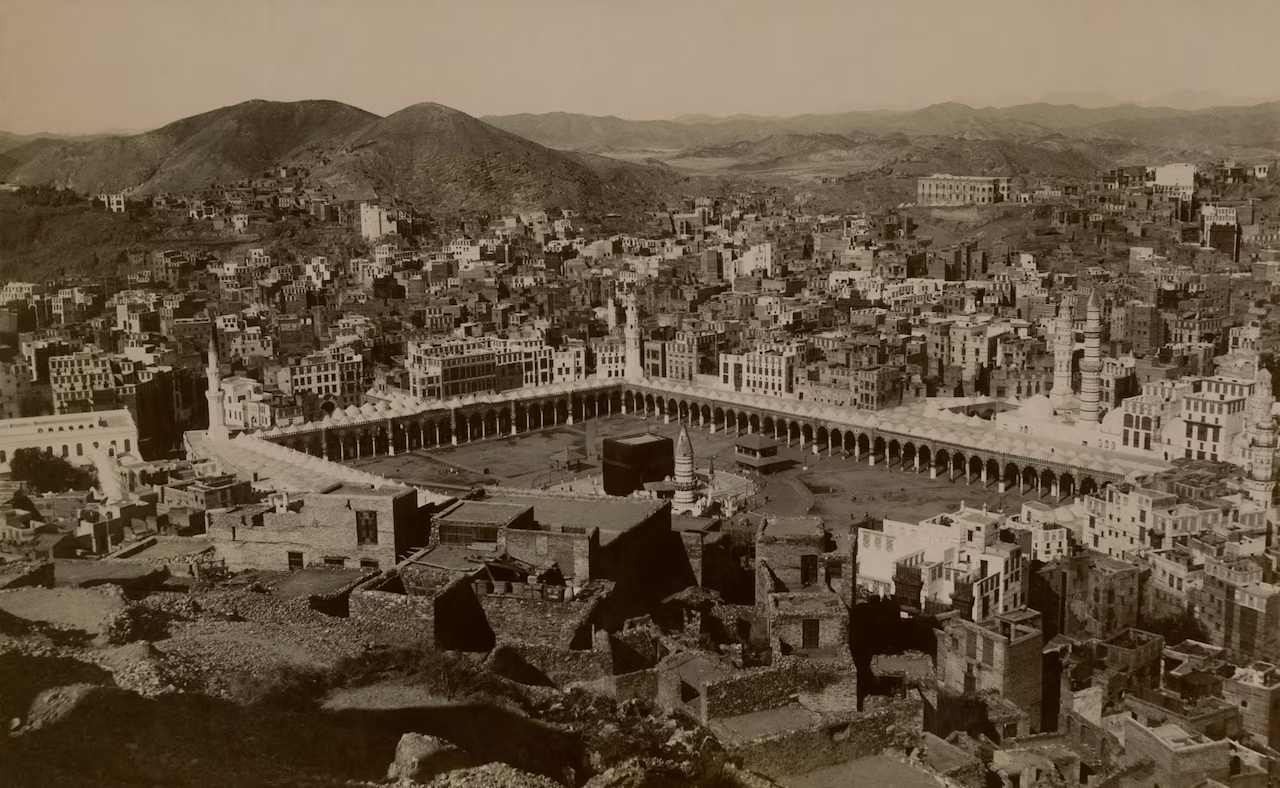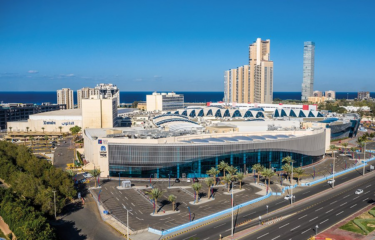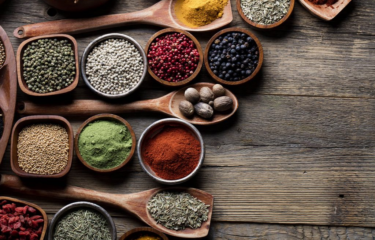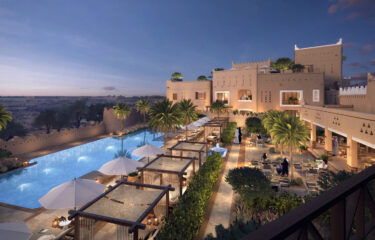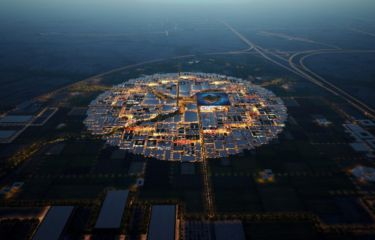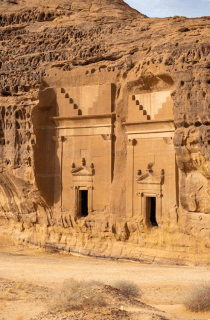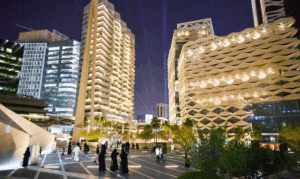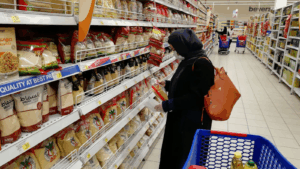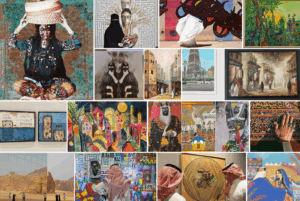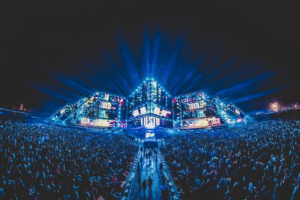The sun sets over the rolling dunes, painting the sand in shades of gold and crimson, humming with an ancient energy that cradles the stories of a land revered by millions. Deep roots whisper of caravans trekking vast deserts, carrying silk, spices, and poetry before the first minarets rose and the call to prayer echoed over the sands. In 570 CE, this land witnessed a birth that would change history. Mecca’s rocky hills stood watch as a boy named Muhammad (S.A.W) opened his eyes, and in 610 CE, under a star-filled sky, divine words first descended upon him. The faith spread, transforming Mecca and Medina from bustling trading hubs to the spiritual heart of Islam.
Today, those lands witness a different story, where tradition and progress merge seamlessly under the same blazing sun. Modern Saudi Arabia pulses with a rhythm that intertwines past and present. Skyscrapers rise alongside ancient mosques, and futuristic cities like NEOM promise innovation rooted in heritage. Festivals blend Bedouin songs with contemporary art, and museums recount history while digital stories reach younger minds. The aroma of cardamom coffee fills the souqs, a sensory bridge between what is and what is. The sands whisper still, now carrying tales of ancient glories and boundless future promises.
This blog is dedicated to the kaleidoscopic celebration of Saudi Arabia’s heritage and progress.
Saudia Arabia’s Heritage and Progress – The Spirit of Pre-Islamic Arabia
Before the dawn of Islam, Arabia was a land where pagan tribes thrived, their beliefs shaped by a pantheon of gods and deep-rooted traditions. Though scattered across deserts and rugged mountains, the people shared a vast code as vast as the landscape itself. Honour, loyalty, and hospitality formed the backbone of their existence, values that anchored their society in times of peace and conflict alike.
Pagan Arabs upheld muruwa—a concept of manly virtue that went beyond physical strength to encompass courage, integrity, and generosity. Tribal chiefs were revered not just for their wealth or power but for their fairness and the wisdom they demonstrated in resolving disputes.
Poetry flowed like a lifeline through their culture, capturing tales of love, heroism, and loss. These rhythms, recited around campfires and marketplaces, were more than entertainment; they were the essence of collective memory, teaching morals and preserving ancestral legacies.
Despite the harshness of desert life, the bonds of kinship and community were sacred. The majlis, or gathering place, was where tribes convened to share counsel, extending open arms to strangers and travelers. This deep sense of duty to one’s tribe and guests laid a foundation that would later echo in the unity and brotherhood championed by Islam in Saudi Arabia’s heritage and progress.
Saudi Arabia’s Heritage and Progress – Birth of the Prophet Muhammad (SAW) and the Rise of Islam
In the year 570 CE, under Mecca’s star-filled sky, a boy named Muhammad (SAW) was born into the noble but modest Banu Hashim clan. Orphaned early, he grew up with a reputation for truthfulness, earning the name Al-Amin, the trustworthy. At the age of 40, in the solitude of Hira’s cave, he received the first revelation. With trembling awe, he carried forth the message that would transform Arabia—La ilaha illallah, there is no god but Allah.
The rise of Islam was met with fierce resistance. The Quraysh, staunch in their ancestral beliefs, viewed this monotheistic faith as a threat to their power and way of life. The Prophet (SAW) and his followers faced persecution, boycotts, and hardship. Financial constraints were severe, but the loyalty of early Muslims never wavered. Their unwavering faith shone brightest during the harshest trials, from the migration to Abyssinia to the momentous Hijra to Medina.
Wars like Badr, Uhud, and the Battle of the Trench tested their resolve, where hypocrites whispered doubt and pagans wielded swords. Yet, obedience to the Prophet (SAW) and faith in divine guidance prevailed. Through hardship, they sowed seeds of unity and hope that would ripple through generations in Saudi Arabia’s heritage and progress.
The Final Moments – The Passing of the Prophet Muhammad (SAW)
In 632 CE, a quiet sorrow settled over Medina as the beloved Prophet Muhammad (SAW) lay ill with a fever. The days passed slowly, each marked by a deep concern for his companions and family. Yet, amidst his final days, a revelation descended that would resonate throughout time: “Today I have perfected your religion for you, completed My favor upon you, and chosen Islam as your religion.” (Surah Al-Ma’idah 5:3). The words, “الْيَوْمَ أَكْمَلْتُ لَكُمْ دِينَكُمْ وَأَتْمَمْتُ عَلَيْكُمْ نِعْمَتِي وَرَضِيتُ لَكُمُ الْإِسْلَامَ دِينًا”, were a declaration that Islam had reached its divine completion.
As his strength waned, the Prophet (SAW) offered guidance and prayers, ensuring his people remained steadfast. On the 12th of Rabi’ al-Awwal, the household was enveloped in profound grief as the Prophet (SAW) departed this world, leaving a void that even time could not fill.
The dynamics shifted in those moments; disbelief rippled through the community. Umar ibn Al-Khattab stood, refusing to accept the loss until Abu Bakr gently reminded, “Whoever worships Muhammad, Muhammad is dead. But whoever worships Allah, Allah is alive and eternal.” The era of prophethood had ended, but the legacy of his teachings continued, shaping Saudi Arabia’s heritage and progress.
The Great Expansion – The Journey of Islam Beyond Arabia

The sun-soaked sands of Arabia could not contain the power of a message that called to every heart, near and far. With the passing of Prophet Muhammad (SAW), the fledgling Muslim community found itself bound by faith, unity, and a fierce devotion to the words revealed. Guided by the Rightly Guided Caliphs, this devotion pushed Islam beyond the borders of the Hijaz, weaving it into the fabric of lands where desert met river and mountain kissed sky.
The era of Caliph Abu Bakr (RA) marked the first wave of conquests, uniting tribes and setting sights on regions to the north. Despite initial challenges, the unwavering belief of Muslims—firm in the promise that their faith held light for the world—drove them forward. Under Caliph Umar ibn Al-Khattab (RA), Islam surged into the powerful empires of Persia and Byzantium. Damascus, a city steeped in history, embraced the crescent where crosses and temples had once stood. It wasn’t victory alone that endeared the conquerors; it was their justice, a governance rooted in principles that echoed the teachings of the Prophet (SAW). These conquerors carried the Qur’an in their hearts, and in their hands, they held treaties of peace for those who sought coexistence.
The spread of Islam wasn’t solely about battles; it was about carrying the message with humility and treating the conquered with dignity. Stories of early Muslims tell of soldiers who would spend their nights in prayer, eyes wet with tears, and merchants who traveled vast distances, preaching not with words, but with their honesty. The love for Islam was like a pulse that beat in every action, in every grain of rice shared with the needy, and in every drop of sweat shed in the name of Allah.
The Umayyad Caliphate – The Empire Beyond Deserts
The Umayyad dynasty rose from the ashes of conflict, expanding Islam from the Iberian Peninsula to the Indus River. Under Muawiyah I, the Muslim empire broke the bonds of the Arabian deserts, embracing lands that had never heard the Qur’an. They constructed grand mosques, like the one in Cordoba, and fostered a civilisation rich in knowledge and scholarship. Nevertheless, despite challenges in governance and wealth, the people’s love for Islam remained strong, echoed in the chants of warriors proclaiming, “Allahu Akbar,” in gratitude and unity.
The Abbasid Caliphate – A Golden Age of Faith and Flourish
The Abbasid Caliphate marked a vibrant new chapter, centring in Baghdad—the Jewel of the East. This city became a beacon of enlightenment, where scholars debated philosophy and knowledge thrived in the House of Wisdom. The Abbasids deepened their influence through cultural exchanges, showcasing Islam as a religion of the mind and heart. Innovations in science and the arts reflected a profound devotion to faith, with scholars believing that their work served humanity and fulfilled divine purpose. Thus, the legacy of Islam’s expansion was not just territorial but a profound connection to the spiritual journey of millions that shaped Saudi Arabia’s heritage and progress for years to come.
The Saud Dynasty – Guardians of the Arabian Peninsula
The Saud dynasty, which has ruled Saudi Arabia for centuries, was founded in the 18th century by Muhammad ibn Saud. He established the first Saudi state in Al-Dirʿiyyah, a small town near what is now Riyadh, laying the foundation for a powerful lineage that would shape the region’s history. This was not just a political maneuver; Muhammad ibn Saud’s alliance with the religious scholar Muhammad ibn Abd al-Wahhab marked the beginning of a profound socio-religious movement. Together, they sought to unify and strengthen the Arabian Peninsula under a shared vision of leadership and reform rooted in Islamic principles.
The dynasty endured cycles of expansion and collapse, weathering foreign invasions and internal strife. Yet, in the early 20th century, Abdulaziz ibn Saud rose with remarkable tenacity, reclaiming lost territories and uniting the scattered tribes. By 1932, he founded the modern Kingdom of Saudi Arabia, igniting a new era defined by oil discoveries that brought unprecedented wealth and influence. Today, the legacy of the Saud dynasty continues as the Kingdom evolves under the leadership of its modern rulers, balancing its historical roots with a forward-looking Vision 2030 that aspires to redefine its place in the world.
The Evolution of Saudi Arabia’s Heritage and Progress
Once bathed in the glimmer of oil wealth, Saudi Arabia stood as a titan in global energy markets, its black gold fueling economies and transforming lives. Hence, this newfound prosperity ignited a vision for something greater. Under Vision 2030, the Kingdom embarked on a journey to diversify its economy, reducing its reliance on oil while nurturing its rich cultural heritage. The bustling souqs now blend with modern galleries, showcasing local artists and artisans alongside traditional crafts.
Festivals celebrating Bedouin poetry and music echo through the streets, weaving the past into the vibrant canvas of the present. Initiatives focusing on sustainability are blossoming, with solar fields rising to harness the sun’s energy and projects aimed at environmental conservation. As the Kingdom evolves, it honors its traditions while embracing innovation, fostering a culture that cherishes both the wisdom of its ancestors and the aspirations of its youth. The spirit of progress dances alongside the rhythms of history, creating a unique narrative that celebrates the richness of its past while paving the way for a sustainable and dynamic future. This is a land where heritage meets modernity, and the promise of tomorrow unfolds beneath its vast, open skies.
FAQs
How is Saudi Arabia balancing tradition and modernization under Vision 2030?
Saudi Arabia is blending its rich cultural heritage with modern innovations through initiatives that promote local arts, festivals, and sustainable projects. Furthermore, by celebrating traditional Bedouin poetry and crafts alongside contemporary art and technology, the Kingdom is creating a dynamic cultural landscape that honours its past while paving the way for a progressive future.
What role does sustainability play in Saudi Arabia’s Vision 2030?
Sustainability is at the core of Vision 2030, as the Kingdom aims to diversify its economy beyond oil. This includes investing in renewable energy projects, such as solar fields, and implementing environmental conservation initiatives, demonstrating a commitment to a greener future while preserving the cultural identity of the nation.

